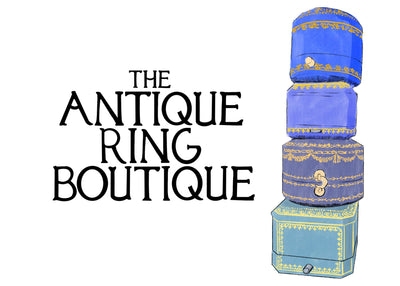A lock of hair in a mourning ring found in a Welsh attic is "very likely" that of Charlotte Bronte, says the Bronte Society.
The braid of hair was revealed on the Antiques Roadshow, filmed in Erddig, north Wales and broadcast on 14 April 2019. The owner said the ring was her late father-in-law's.
The author's name in inscribed on the inside as well as the date of her death - 31 March 1855 when she died at Haworth of Tuberculosis, according to the doctors at the time.
The owner showed it to the show's ring expert, Geoffrey Munn, and pointed out the ring's hinge: "Inside there's plaited hair, I think it may be the hair of Charlotte Bronte."
She revealed she'd had to hunt through "pots and pots" of keys to find one that opened it and then find a magnifying glass to read the inscription.
Munn replied that there was "very little reason to doubt" the mourning ring's authenticity and said it was "utterly and completely credible, in part due to its consistency with other known items belonging to the author of Jane Eyre. “It opens like a little biscuit-tin lid, and amazingly we see this hair work within, very finely worked and plaited hair. It echoes a bracelet Charlotte wore of her two sisters' hair. So it's absolutely the focus of the mid- to late 19th century and also the focus of Charlotte Bronte.” Ann Dinsdale, principal curator at the Bronte Society in Yorkshire, backed up the finding.
As a ring, Munn valued it at £25 - but the uniqueness of the hair and inscription means it's worth £20,000.
He also explained the reason for mourning rings: "There was a sort of terror of not being able to remember the face and the character of people who had died, and so this is part of a tradition of making a true souvenir, an incorruptible fragment of the person that has died and to wear it. It wasn't uncommon."
ARB verdict
Mourning rings have a history rooted in commemoration and remembrance, gaining popularity during the Victorian era as a way to honour the deceased. Signifying a tangible symbol of grief, they were often personalised with the name, date of death or even hair of the departed loved one.
Regarded as a precious relic of the deceased, hair held great sentimental value and served as a tangible connection to lost ones.
Hair was considered an enduring part of a person's identity and believed to hold a fragment of their essence. Locks of hair were carefully woven or braided and set or enclosed within a compartment on the ring.
By incorporating hair into mourning jewellery, the wearer could keep a physical memento of the deceased close at hand. It is likely that the owner of this mourning ring found solace and comfort in the tangible reminder of Bronte's presence.
Today, while mourning rings have become less common, their historical significance remains a deeply personal expression of sentiment. These precious artefacts continue to capture the essence of loss in a meaningful way and are scarcely found treasures, especially ones with relations to influential figures such as Charlotte Bronte.

